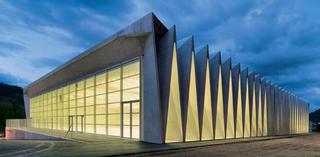Structural Design II
The courses Structural Design I and II explain the fundamentals of how structures function. These courses put great emphasis on studying the relationship between the form of a structure and the internal forces within it by means of graphic statics.
Frames
In this exercise, we learn to evolve possible redirections of the internal forces in frames. Likewise, the static determinacy of different support situations and possible inner force distribution in reinforced concrete frames are discussed.
Frame Structures
In a frame, vertical elements (column) and horizontal elements (beam) are rigidly connected. The constructive development of these frame corners needs particular attention.
The main frame types are three-hinged, two-hinged, and fixed frames. In addition to these, there are various special types. Frames are structures that are subject to bending stress and carry both horizontal and vertical loads. This is why they are often used as bracing elements. Frames have both vertical and horizontal support reactions.
Redirecting Forces
To evolve possible redirections of the internal forces in beams, frames, and walls, it is appropriate to use the direct distribution of the internal forces (thrust line/arch) as a starting point. In most cases, this thrust line is situated outside of the material. In order to redirect the internal forces, in addition to compression forces, tension forces need to be engaged. By means of these tension forces, the thrust line is redirected in a way, such that it remains inside the material.
Dimensioning
In addition, dimensioning is refreshed again in this exercise. For this purpose, the compendium drawing 2.5 and the formulary 2.6 can be consulted.
